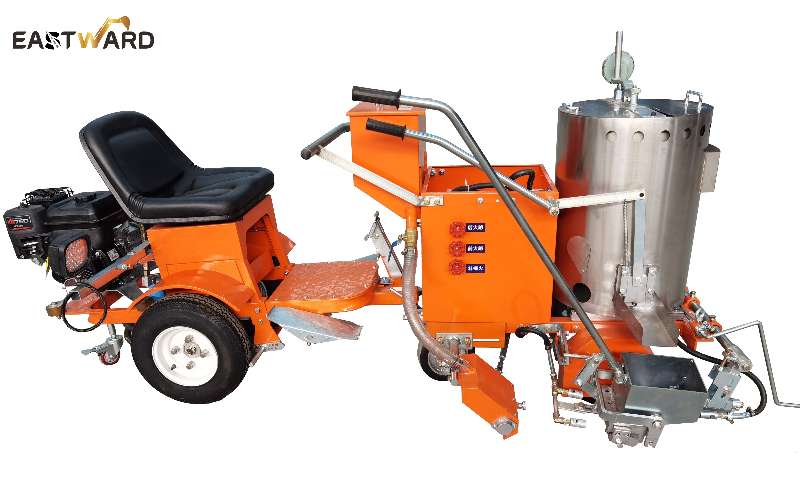Thermoplastic Road Marking Machine & Equipment
Parking Lot Striping Machine
While striping can be done by hand, using a parking lot striping machine offers several benefits, including increased efficiency and accuracy.As the owner or manager of a parking lot, ensuring that the space is well-maintained is crucial. One of the most important aspects of parking lot maintenance is striping. Striping involves painting lines, arrows, and other markings to designate parking spots, traffic flow, and safety zones.

Benefits of Using a Parking Lot Striping Machine
1. Efficiency
Using a parking lot striping machine can save you a significant amount of time compared to striping by hand. With a machine, you can stripe multiple parking spaces in a fraction of the time it would take to do it manually.
2. Accuracy
Parking lot striping machines use advanced technology to ensure that your lines are straight, even, and consistent. This can help to minimize confusion and ensure that your parking lot is easy to navigate for both drivers and pedestrians.
3. Cost-effectiveness
While investing in a parking lot striping machine may seem like a significant expense upfront, it can actually save you money in the long run. With a machine, you can complete striping projects quickly and accurately, reducing the need for touch-ups or re-striping down the line.
4. Safety
By using a parking lot striping machine to create clear, visible markings, you can help to enhance safety in your parking lot. Clearly marked parking spots, crosswalks, and other designated area.

Best Practices for Striping Your Parking Lot
1. Choose the Right Machine
When selecting a parking lot striping machine, it is important to choose one that is appropriate for your needs. Consider the size of your parking lot, the type of surfaces you will be striping, and the frequency of use when making your decision.
2. Prepare the Surface
Before striping your parking lot, it is important to ensure that the surface is clean and free of debris. This can help to ensure that your markings adhere properly and last longer.
3. Plan Your Layout
Before beginning the striping process, it is important to plan out your layout carefully. Consider the flow of traffic, the location of entrances and exits, and any other factors that may affect the layout of your parking lot.
4. Measure and Mark
To ensure that your lines are straight and even, it is important to measure and mark your parking spaces carefully. Using chalk or paint to mark your lines in advance can help to ensure that your finished product is accurate and consistent.
5. Follow Safety Guidelines
When striping your parking lot, it is important to follow all relevant safety guidelines. This may include wearing appropriate personal protective equipment, using caution tape to cordon off work areas, and working during off-peak hours to minimize disruption to drivers and pedestrians.
EASTWARD TRAFFIC’s Parking Striping Solution
Using EASTWARD TRAFFIC’s parking lot striping machine can offer numerous benefits for those looking to maintain their parking lots. By investing in the right equipment and following best practices for striping, you can ensure that your parking lot is safe, easy to navigate, and visually appealing.
FAQ
Parking lot striping can be done using various types of paint including water-based acrylic, oil-based, thermoplastic, and epoxy paint, each with its own unique features and benefits.
The drying time for parking lot stripe paint depends on the type of paint used, the environmental conditions, and the thickness of the paint applied, but generally, water-based acrylic paint can dry in 30 minutes to an hour, while oil-based paint can take up to 8 hours or more to dry.
The thickness of parking lot paint lines varies depending on the specific needs of the parking lot and local regulations, but in general, parking lot paint lines are between 4 and 6 inches wide and between 15 and 30 mils thick.
The amount of paint needed for a parking lot depends on factors such as the size of the parking lot, the number of parking spaces, the width of the lines, and the type of paint being used, with one gallon of paint typically covering between 250 and 350 square feet of surface area when applied at a thickness of 15 to 20 mils.
The standard for a parking lot can vary depending on local regulations and the specific needs of the parking lot, but generally, a standard parking space is approximately 9 feet by 18 feet and is marked with lines that are 4 to 6 inches wide and between 15 and 30 mils thick. Additionally, parking lots should have appropriate signage, designated accessible parking spaces, and clear markings for pedestrian walkways and traffic flow.